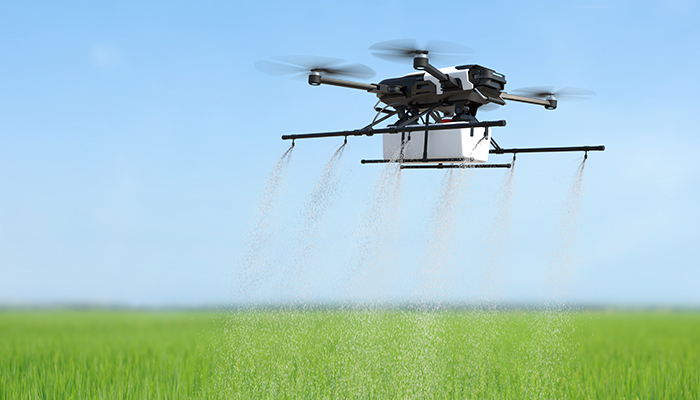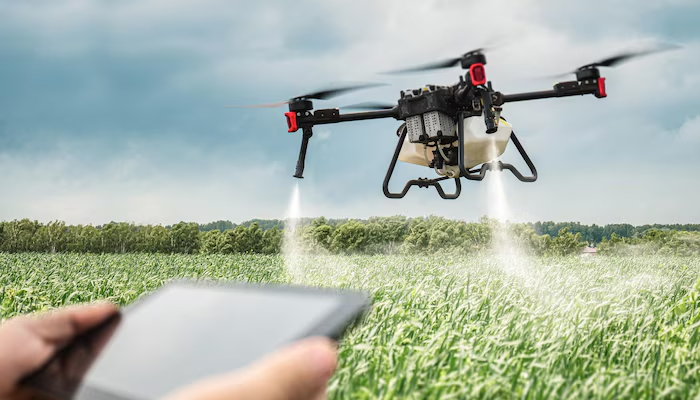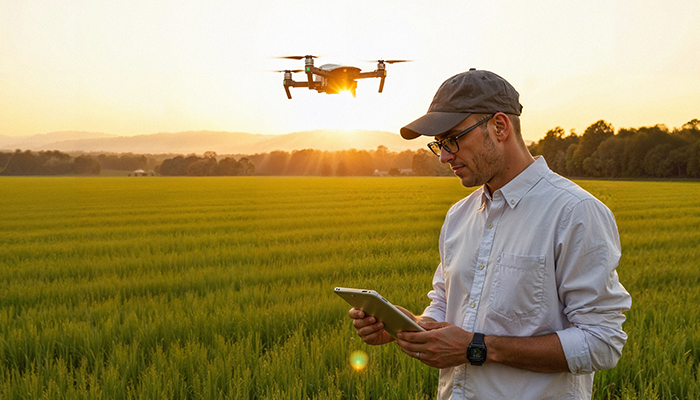How Long Range Drones Push the Boundaries of Flight and Connectivity
Nowadays Drones are extremely popular. Many people use this to entertain, operating low-cost quadcopters in the backyard. The commercial operators use advanced drones for photo, mapping, or surveillance purposes. Perhaps one of the coolest new directions in drone technology is to think of it as the long range drone. Unlike your average consumer-grade drone, long range drones can fly for large distances with no loss of signal. Well then, what is a long range drone, and what does it do? Let’s see.
Overview of Long Range Drone
A long range drone is an unmanned aerial vehicle (UAV). It can fly a distance considerably farther than the line of sight, usually over 20 kilometers from the operator. In contrast to general consumer drones used for short-range photography, these drones are designed to be robust, long range communicative, and adept in navigation. You will usually see fixed-wing or VTOL (Vertical Takeoff and Landing) designs in this category, as they provide the best of both worlds: Long flight times and the capability to take off or land in confined spaces.
Some of the most impressive features of long-range drones are
-
Long-term Power:
Long range drones are powered by high-capacity lithium polymer (LiPo) batteries, hybrid engines, or even hydrogen fuel cells to enable prolonged flights.
-
Extended Range:
Long range drones use satellite links or cellular networks with 4G and 5G to maintain themselves online with the operator continuously for BVLOS (Beyond Visual Line of Sight) operations.
-
Pre-configured Payload Solutions:
Based on the mission, they may endow them with cameras, multispectral sensors, delivery cases, and additional payloads.
Agricultural, logistic, and public security industries are widely using drones across long distances to patrol large expanses of ground, collect large amounts of data effectively, and perform reliable far-away commands.
How Far Can a Drone Fly? The Basics of Range

Do you know how far a drone can fly? Before knowing about the working principle of a long range drone, you should know the range that drones can fly. In short, the range is the utmost distance a drone can fly away from its controller without losing signal. For general drones, the range may vary from 100 meters to 2 kilometers. But for a long range drone, this number may reach 20 kilometers or even more, depending on the model and technology.
The actual distance a drone can fly depends on several things:
- Battery life
- Signal strength and interference
- Weather
- Obstacles such as building or leaves
It is not merely a case of how far the long range drone travels but how frequently it is able to send and receive data at that distance. That is where long range drones are helpful.
Working on a Long Range Drone
A long range drone utilizes a masterful combination of technology that enables it to cover more ground, remain online, and function well for extremely extended periods. Here’s how they do it:
-
Power and Durability
To travel long distances, these drones must have a lot of staying power. That’s why they are being outfitted with high-intensity power packs in the form of high-capacity batteries, fuel-efficient motors, or hybrid systems that mix both. Construction also plays a role; light construction and slim, aerodynamic designs reduce drag and make every watt of energy count. That’s what keeps them flying for hours on end without refueling or recharging.
-
Credible Communication Systems
For the drone to be controlled over a long distance by its pilot, there must be a good and solid link. Long distance drones frequently use two radio frequency bands (e.g., 2.4 GHz and 5.8 GHz) along with cellular networks, such as 4G or 5G, and even satellite links for specialized applications. There are these sophisticated communication systems that keep the drone’s link with the ground control station, even at long distances. And transmit live video back down to the earth and receive real-time commands.
-
Autonomy and Navigation
Flying out of sight, these drones must be able to navigate accurately and do operations on their own. That is why they are equipped with GPS technology, waypoint navigation, and autonomous flight modes. A majority of those also come equipped with obstacle detection and avoidance technology, which enables them to safely fly in congested areas. And if something is not right, such as a loss of signal, they are intelligent enough to return home by themselves.
What are the Applications of Long Distance Drones
A long-distance drone is transforming businesses by increasing reach, maximizing efficiency, and solving issues previously difficult or expensive to address. Let’s take a look at how they’re changing industries.
-
Agriculture and Precision Farming
In the modern era of farming, you need to be able to widely cover large sections of land at an economical rate. And this is what a long range drone is for. The drones can survey fields in their entirety to provide real-time information on crop health, soil moisture status, and irrigation status. Rather than walking acres of land, you can have this drone, which provides accurate data.
They are also used for directly spraying fertilizers, pesticides, and herbicides when required, sparing resources but with minimal chemical use. Also, analyzing patterns of crop growth can lead to drones assisting in predicting yields better. Even animal tracking is a breeze, particularly in extensive pastures. Generally, long range drones have proved to be a useful tool for smart and sustainable farming.
-
Inspection and Monitoring of Infrastructure
It used to take a great deal of time and manpower to inspect power cables, pipelines, rail tracks, or far-away bridges. Those days are behind us now. Long range drone is doing it now. They can travel hundreds of kilometers to inspect for structural defects, rust, or leakage without exposing the workers to unsafe conditions.
For instance, wind turbines and dams are inspected with high-definition video and thermal imaging. Drones even provide 3D topographic maps of construction sites to enable teams to track progress in large open spaces. With drones, companies can detect maintenance requirements ahead of time, avoid failure, and save on repair costs.
-
Logistics and Delivery
Drone delivery is also making inroads, not just for small packages in an individual neighborhood. A long-distance drone is being tested and utilized to transport goods long distances, particularly to remote places such as rural communities or disaster areas.
They are ideal for getting important goods such as medicine or vaccines somewhere fast and safely. Rather than sitting around for days waiting to get something shipped by land or sea, a drone will transport it within hours, even minutes. That’s going to revolutionize how supply chains operate so delivery can reach more people faster and more reliably.
-
Search and Rescue Operations
In emergency situations where every minute matters, like natural calamities or rescue operations, long range drones are a lifesaver. Drones for these larger areas help search and rescue teams. With the help of these drones, teams can find people who are lost in forests or floodwaters.
They provide instant aerial views of disaster sites, allowing ground teams to react and respond more rapidly. Regardless of whether you use drones for earthquake damage assessment or fire zone survivor search, no one can argue that they provide a safer method to view the ground from above and do so faster. In times of crisis, seconds count, and long range drones help make those seconds count.
What is BVLOS in Long Distance Drone?
Perhaps no more innovation in drone technology exists than flying Beyond Visual Line of Sight (BVLOS). In contrast to typical drones, which have to stay within the pilot’s line of sight, long range BVLOS drones can fly much farther, far beyond what the pilot’s eyes can detect.
It is this increased range that realizes the full potential of a long range drone, particularly for users such as mapping, delivery, and search and rescue. But flying BVLOS is not a matter of being out of sight, and it does have rigorous safety demands.
Drones that can safely and legally fly beyond visual line-of-sight need more advanced systems such as detect-and-avoid (DAA) technology and secondary communications, and they have to fly within aviation laws. Such features prevent crashes and offer control even at very remote distances. Basically, BVLOS enables more intense, longest range drone flight but also requires wiser tech and greater responsibility.
Regulatory Factors Affecting Long Range Drones

Operating a long range drone is about possessing the proper tech and also about adhering to stringent regulations that differ from country to country. Because these drones will be operated out of the pilot’s line of sight (BVLOS), additional safety measures and approvals must be satisfied to execute safe operations.
-
FAA and Part 107 (United States)
The US Federal Aviation Administration (FAA) requires most drones to be kept in line of sight. If you want to go further than that, you will need a Part 107 special waiver. To be approved, you’ll have to demonstrate good safety procedures like detect-and-avoid (DAA) systems and good communication when commanding the drone at all times.
-
International Rules and Compliance
There are such rules for other countries. For example, in Europe, the operation of drones is governed by the European Union Aviation Safety Agency (EASA). Like in America, BVLOS operation is also subject to approval and the application of remote identification regulations. Adherence to the rules makes the inclusion of drones in airspace systems safe.
-
No-Fly Zones
Wherever you are within the U.S. or Europe, the drone is not usually permitted to fly over airports, military bases, or other off-limits zones. Flying into such zones will create legal difficulties, so verify the airspace before launching.
-
Insurance Problems
Liability insurance is usually needed for the commercial use of a drone. This protects the pilot and the general public in case anything happens or if there is damage while airborne.
-
Pilot Certification
Distant insurance flights, especially BVLOS operations, usually demand more than an ordinary license. Operators generally need high-level certification and special training to be prepared for extended independent flight.
-
Safety and Privacy Considerations
It is for flying safely and responsibly. That involves respecting individuals’ privacy, protecting the data your drone transmits, and staying clear of collisions with other drones. Governments specifically regulate these issues in congested or dangerous zones.
How To Choose a Longest-Range Drone
The drones that you will need for your long range mapping, surveillance, delivery, or industrial inspection, each of these requirements is unique. Some things to consider before making the final choice are as follows:
-
Flight Range and Battery Life
First, make sure the drone can cover the distance you need. Examine both maximum flight range and flight endurance (how long it flies). When flying large distances or in far-flung areas, use drones with longer batteries or hybrid power systems.
-
Communication & Signal Strength
An indestructible link is most critical while flying far from the controller. Select a drone that has robust transmission systems. For example, double frequency signals (2.4 GHz/5.8 GHz), 4G/5G connectivity, or even satellite communication. They offer smooth video and control signals, even at long distances or in interference zones.
-
Payload & Sensor Compatibility
What would you like your drone to have? HD cameras, thermal sensors, LiDAR, and specialized equipment are just a few. Whatever it is, the drone will need to accommodate both payload weight and type. Ensure the payload capacity is appropriate for your mission.
-
Smart Navigation & Autonomy
Seek capabilities that increase the drone’s intelligence and safety, such as waypoint flight, avoidance of obstacles, GPS accuracy, and auto-return functionality, which are all necessary for safe and reliable BVLOS operations.
-
Legal & Regulatory Fit
Before you buy, make sure the drone is compliant with the laws of your region. That is to say, it should be compliant with local aviation laws, such as BVLOS certification, Remote ID requirements, and airspace restrictions. It will save you a lot of bureaucratic problems in the future.
Weather Resistance and Build Quality
If you expect to fly in poor conditions, such as wind-swept plains, dry farms, or rain-soaked terrain, select a drone that can handle poor weather and poor conditions. Check for weather sealing and heavy-duty construction.
-
Budget and Maintenance
A Long range drone is fairly varied in terms of price. Some drones are thousands of dollars, but professional-grade ones are far more expensive. Don’t include those prices, the price of maintenance and replacement components, software updates, and training charges.
End Note
In short, a long range drone is more than just an aerial camera. It is an engineering system that merges technology, function, and engineering to accomplish work over vast distances. Whatever your purposes are, whether commercial, exploratory, or recreational, the applications of long range drones just keep getting bigger and better, giving unlimited potential.
Suppose you want to know more about top models or just need guidance in choosing your long range drone, never forget to go through the guide and expert opinions. It will work based on your purpose, budget, and skill level.

